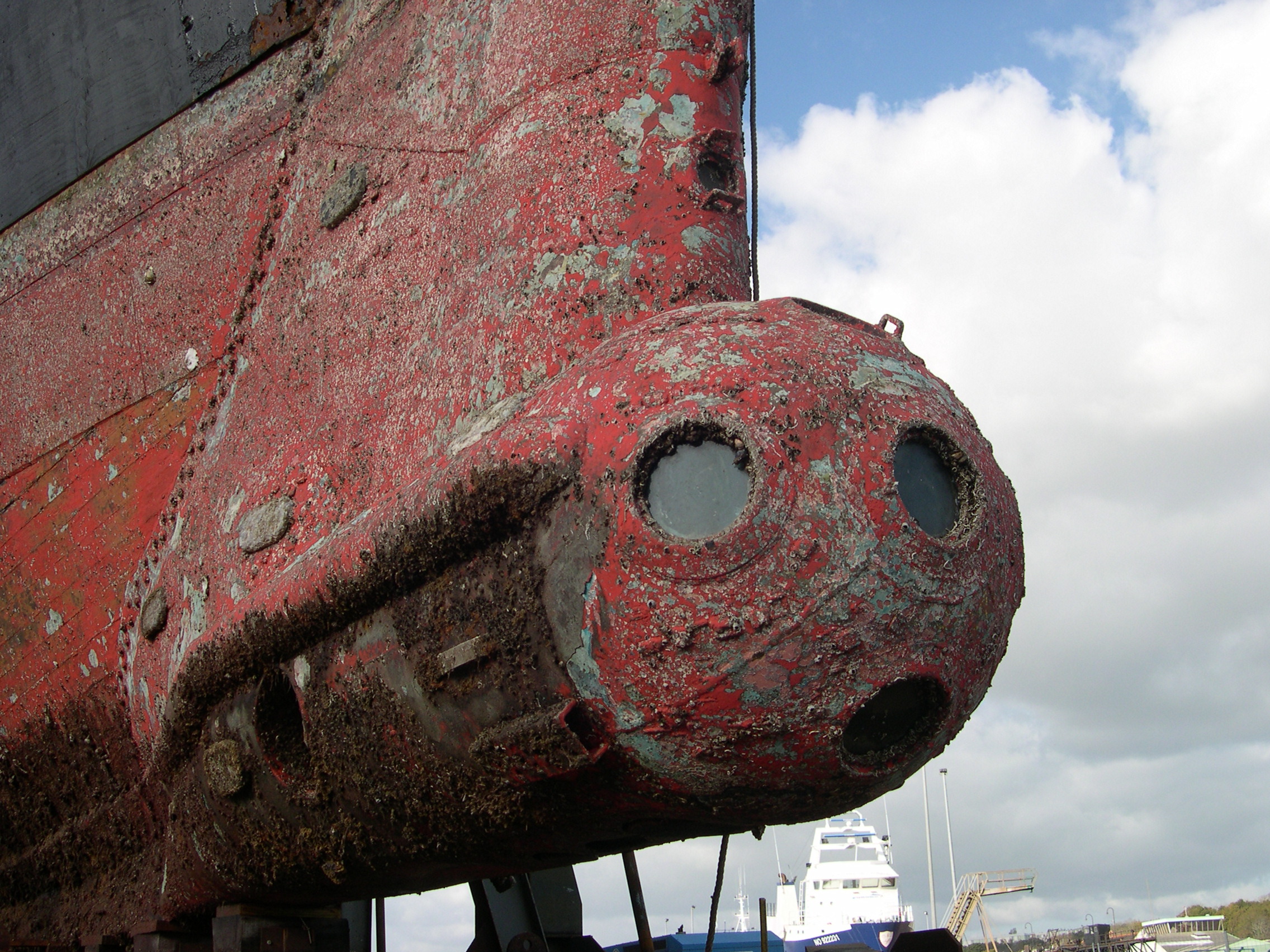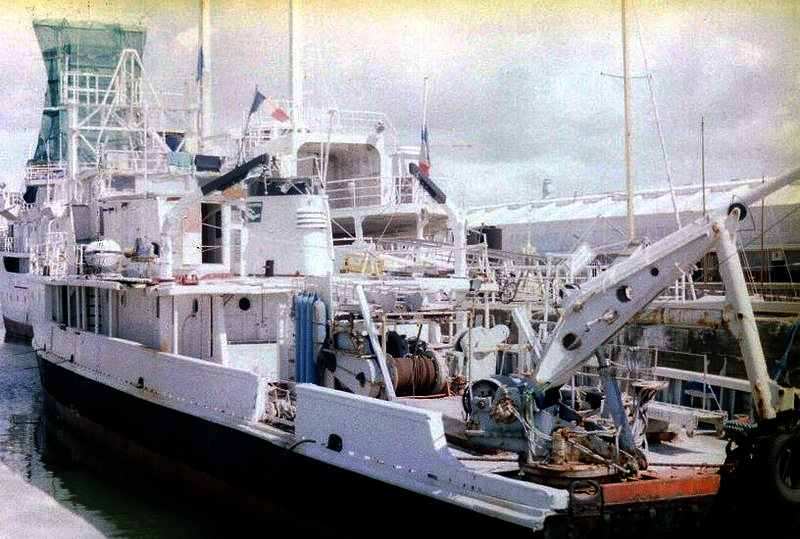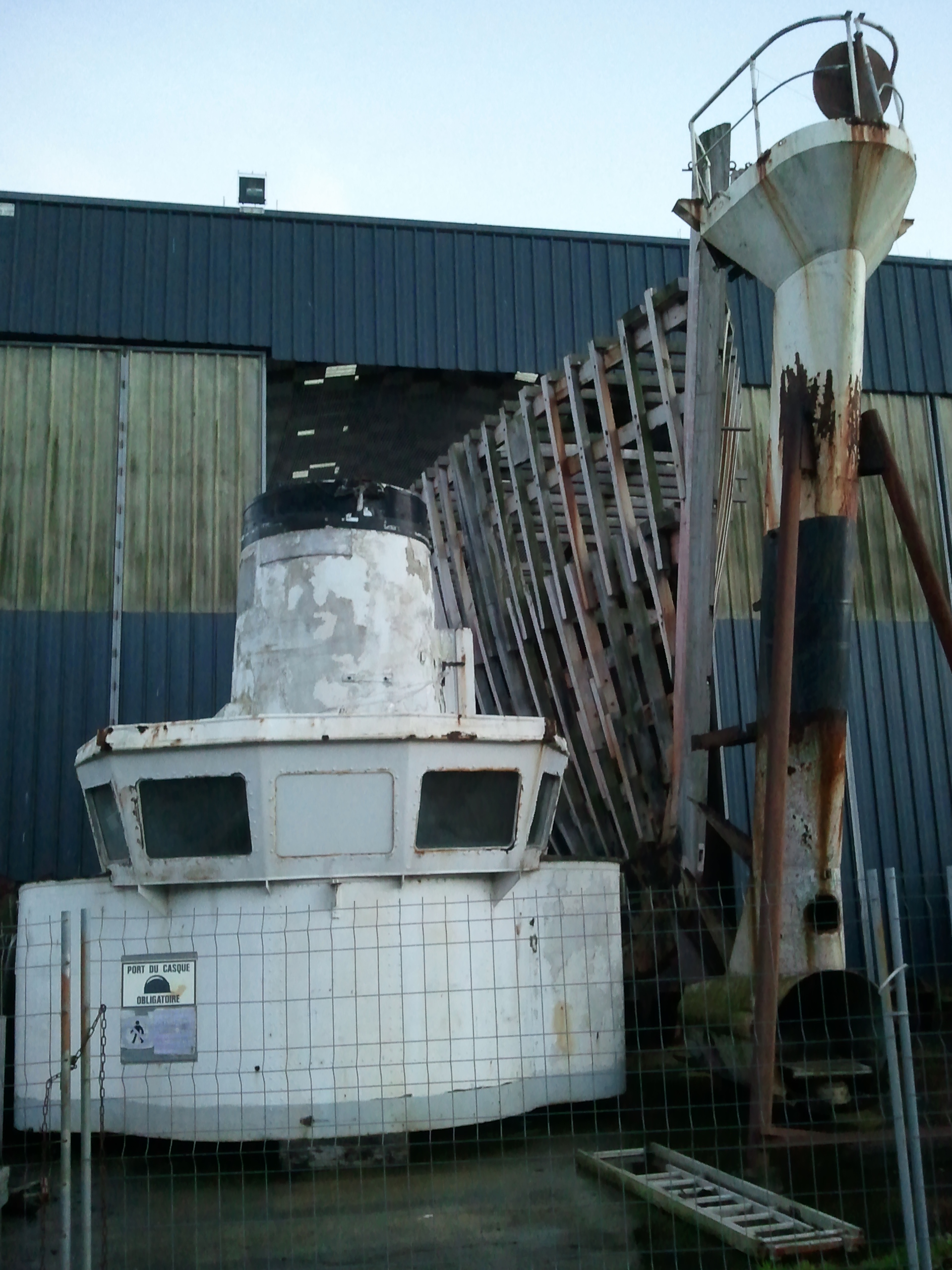Calypso representerer oppfyllelsen av en drøm for sin eier Jacques-Yves Cousteau, en verdenskjent marin forsker hvis dykketeknikk og mange i hovedsak har blitt bidratt til et dekke av sjøhemmelighetene.
I 1950 kjøpte Cousteau en 8 år gammel, amerikansk bygd minerydder, som etter omfattende endringer og modus ble et fullt utstyrt marimt forskningsskip.
Calypso seilte sin jomfrureiser i Rødehavet i 1951, og siden den gang har Cousteau, sønnen Philippe og et team av forskere utført utallige undervannsstudier og vitenskapelige eksperimenter over hele verden.
Cousteau har skrevet flere bøker om sine erfaringer, men Calypso er sannsynligvis mest kjent gjennom de mange spennende TV -programmene som er blitt spilt inn om sine reiser.
Calypso er 42 m lang, veier 360 tonn og har en toppfart på 12 knop. Skipet er utstyrt med mye spesialutstyr som muliggjør mange detaljerte observasjoner, prøvetaking, fotografering og eksperimenter. Utstyret inkluderer et observasjonskammer i baugen, en oval dykkerklokke, et Galaezzi -dykkekammer, en oppblåsbar båt for turer i områder med lite vann, et helikopter og en mengde undervannsutstyr.
BILLING BOATS modellen er utviklet i henhold til originaltegningene og med velvillig samarbeid av “Fondation Cousteau” i Paris.
World War II British minesweeper (1941–1947)
Calypso was originally a minesweeper built by the Ballard Marine Railway Company of Seattle, Washington, United States for the United States Navy for loan to the British Royal Navy under lend-lease. A wooden-hulled vessel, she is built of Oregon pine.
She was a British yard minesweeper (BYMS) Mark 1 class motor minesweeper, laid down on 12 August 1941 with yard designation BYMS-26 and launched on 21 March 1942. She was commissioned into the Royal Navy in February 1943 as HMS J-826 and assigned to active service in the Mediterranean Sea, based in Malta, and was reclassified as BYMS-2026 in 1944. Following the end of World War II, she was decommissioned in July 1946 and laid up at Malta. On 1 August 1947 she was formally handed back to the US Navy and then struck from the US Naval Register, remaining in lay-up.
Maltese ferry (1949–1950)
In May 1949 she was bought by Joseph Gasan of Malta, who had secured the mail contract on the ferry route between Marfa, in the north of Malta, and Mġarr, Gozo in 1947. She was converted to a ferry and renamed Calypso G after the nymph Calypso, whose island of Ogygia was mythically associated with Gozo, entering service in March 1950. After only four months on the route, Gasan received an attractive offer and sold her.
Jacques Cousteau's Calypso (1950–1997)

Bulbous bow observation chamber of Calypso
The British millionaire and former Member of Parliament (MP), Thomas Loel Guinness bought Calypso in July 1950. He leased her to Cousteau for a symbolic one franc a year. He had two conditions: that Cousteau never ask him for money and that he never reveal his identity, which only came out after Cousteau's death. Cousteau restructured and transformed the ship into an expedition vessel and support base for diving, filming and oceanographic research. One of the more unusual expeditions involving the vessel was a survey of Abu Dhabi waters conducted by Cousteau on behalf of British Petroleum (BP) in 1954 – the first and last time it was used for an oil survey.
Calypso carried advanced equipment, including one- and two-man mini submarines developed by Cousteau, diving saucers, and underwater scooters. The ship was also fitted with a see-through "nose" and an observation chamber 3 metres (9.8 ft) below the waterline, and was modified to house scientific equipment and a helicopter pad. The Calypso underwater camera is named after this ship.
On 8 January 1996, a barge accidentally rammed Calypso and sank her in the port of Singapore. On 16 January, she was raised by a 230-foot (70 m) crane, patched, and pumped dry before being put in a shipyard.
Restoration (1997–present)

Calypso at La Rochelle (1999)

Calypso's bow extending from the Piriou shipyard's hangar in which she was stored (January 2014)
Calypso was later towed to the Maritime Museum of La Rochelle in 1998 to be an exhibit.
A legal dispute between Jacques Cousteau's widow, Francine Cousteau, and Loel Guinness, the grandson of the original owner, delayed restoration work. During this time the city of La Rochelle withdrew its funding for the restoration. Calypso remained in disrepair.
In 2002, Alexandra Cousteau, Cousteau's granddaughter from his first marriage, tried to become involved in the restoration. The Cousteau Society, controlled by Francine Cousteau, reportedly spent hundreds of thousands of dollars to defend Francine's exclusive use of the name and to prevent Alexandra's participation in the restoration of Calypso.
In 2006 Loel Guinness transferred ownership of Calypso to the Cousteau Society for the sum of one euro. In October 2007 the ship was moved to Concarneau where restoration began at the Piriou Shipyard. Work on Calypso stopped in 2009 because of the non-payment of bills by Francine Cousteau.
Piriou claimed to be owed €850,000 for work already done. The Cousteau Society counter-sued for defective work. In 2015 a French court ordered Francine Cousteau to settle outstanding yard bills and remove Calypso from a Brittany shipyard or allow the shipyard to sell the vessel.
The Cousteau Society announced in 2016 that a solution had been found to allow the ship to return to service with new engines. In 2017 a fire damaged new wooden parts of the Calypso at a shipyard near Istanbul, Turkey, where her refitting had been in progress.
Building Instructions are in:
English, French, German, Danish; Dutch, Spanish, Italian and Portuguese




















